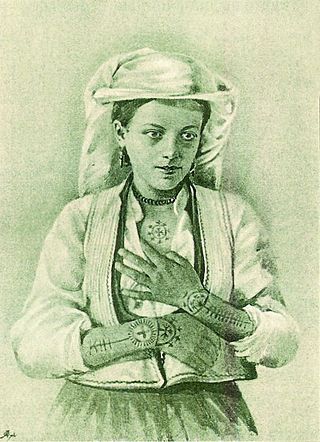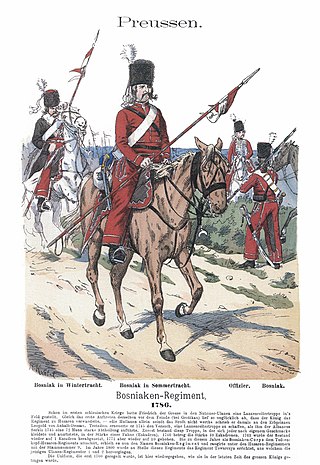
The Butmir culture was a major Neolithic culture in central Bosnia, developed along the shores of the river Bosna, spanning from Sarajevo to Zavidovići. It was discovered in 1893, at the site located in Butmir, in the vicinity of Ilidža, which gave its name to an entire cultural group of the Late Neolithic in central Bosnia, the Butmir culture. It is characterized by its unique elaborately decorated pottery and anthropomorphic Figurines, and is one of the best researched European cultures from 5100 to 4500 BC. It was part of the larger Danube civilization. The largest Butmir site is in Visoko basin, in Okolište.

The Agromyzidae are a family of flies, commonly referred to as the leaf-miner flies for the feeding habits of their larvae, most of which are leaf miners on various plants. It includes roughly 2,500 species, they are small, some with wing length of 1 mm. The maximum size is 6.5 mm. Most species are in the range of 2 to 3 mm.
Erich Martin Hering was a German entomologist who specialised in leafmining insects, He was a curator in the Museum für Naturkunde in Berlin, where his collections of Lepidoptera, Coleoptera, Hymenoptera, Diptera are conserved. His collections of Agromyzidae are shared between MfN and the Agricultural School at Portici now part of the University of Naples Federico II.
Miloš Okuka is a Serbian linguist, Slavist, dialectologist and literature historian.
This is a survey of the postage stamps and postal history of Bosnia and Herzegovina.

Sicanje or bocanje was a widespread custom mostly among Roman Catholic Croat teenage girls and boys of the central regions of Bosnia and Herzegovina, as well as the Dalmatia region of Croatia. The phenomenon may predate the Slavic migration to the Balkans, and consequently Christianity itself, but it was possible to trace its appearance until the middle of the 20th century.

The Bosniak Corps was a Prussian Army unit of lancers of Bosnian origin. In 1745 they were organised in the 1st Hussar Regiment "von Ruesch".
Karl or Carl Schawerda was an Austrian Czech entomologist who specialised in Lepidoptera.
Friedrich Katzer was an Austrian geologist and mineralogist.
The 1910 population census in Bosnia and Herzegovina was the fourth census of the population of Bosnia and Herzegovina taken during the Austro-Hungarian Condominium of Bosnia and Herzegovina

The campaign to establish Austro-Hungarian rule in Bosnia and Herzegovina lasted from 29 July to 20 October 1878 against the local resistance fighters supported by the Ottoman Empire. The Austro-Hungarian Army entered the country in two large movements: one from the north into Bosnia, and another from the south into Herzegovina. A series of battles in August culminated in the fall of Sarajevo on the 19th after a day of street-to-street fighting. In the hilly countryside a guerrilla campaign continued until the last rebel stronghold fell after their leader was captured.

Maria of Bosnia was a member of the House of Kotromanić who married into the House of Helfenstein.
Calycomyza is a genus of flies in the family Agromyzidae.
Calycomyza verbenae is a species of fly in the family Agromyzidae.
Liriomyza ptarmicae is a species of fly in the family Agromyzidae.
The Augustin musket was an Austrian musket used in the mid 19th century. It was used in several European wars, and also featured in the U.S. Civil War.
Ludwig Albrecht Gebhardi was a German historian. He is the author of numerous works dealing in particular with the history of Denmark, Norway, Hungary and the Slavic States, including Serbia.

Bosnia and Herzegovina–Germany relations are the bilateral relations between Bosnia and Herzegovina and the Federal Republic of Germany. Diplomatic relations between Bosnia and Herzegovina and Germany have existed since 1992. Bosnia and Herzegovina has an embassy in Berlin and consulates general in Frankfurt am Main, Munich and Stuttgart. Germany maintains an embassy in Sarajevo.
Napomyza is a genus of flies in the family Agromyzidae.






